Dmitry Kazhdan
GCI: A (G)raph (C)oncept (I)nterpretation Framework
Feb 09, 2023Abstract:Explainable AI (XAI) underwent a recent surge in research on concept extraction, focusing on extracting human-interpretable concepts from Deep Neural Networks. An important challenge facing concept extraction approaches is the difficulty of interpreting and evaluating discovered concepts, especially for complex tasks such as molecular property prediction. We address this challenge by presenting GCI: a (G)raph (C)oncept (I)nterpretation framework, used for quantitatively measuring alignment between concepts discovered from Graph Neural Networks (GNNs) and their corresponding human interpretations. GCI encodes concept interpretations as functions, which can be used to quantitatively measure the alignment between a given interpretation and concept definition. We demonstrate four applications of GCI: (i) quantitatively evaluating concept extractors, (ii) measuring alignment between concept extractors and human interpretations, (iii) measuring the completeness of interpretations with respect to an end task and (iv) a practical application of GCI to molecular property prediction, in which we demonstrate how to use chemical functional groups to explain GNNs trained on molecular property prediction tasks, and implement interpretations with a 0.76 AUCROC completeness score.
Towards Robust Metrics for Concept Representation Evaluation
Jan 25, 2023



Abstract:Recent work on interpretability has focused on concept-based explanations, where deep learning models are explained in terms of high-level units of information, referred to as concepts. Concept learning models, however, have been shown to be prone to encoding impurities in their representations, failing to fully capture meaningful features of their inputs. While concept learning lacks metrics to measure such phenomena, the field of disentanglement learning has explored the related notion of underlying factors of variation in the data, with plenty of metrics to measure the purity of such factors. In this paper, we show that such metrics are not appropriate for concept learning and propose novel metrics for evaluating the purity of concept representations in both approaches. We show the advantage of these metrics over existing ones and demonstrate their utility in evaluating the robustness of concept representations and interventions performed on them. In addition, we show their utility for benchmarking state-of-the-art methods from both families and find that, contrary to common assumptions, supervision alone may not be sufficient for pure concept representations.
Explainer Divergence Scores (EDS): Some Post-Hoc Explanations May be Effective for Detecting Unknown Spurious Correlations
Nov 14, 2022Abstract:Recent work has suggested post-hoc explainers might be ineffective for detecting spurious correlations in Deep Neural Networks (DNNs). However, we show there are serious weaknesses with the existing evaluation frameworks for this setting. Previously proposed metrics are extremely difficult to interpret and are not directly comparable between explainer methods. To alleviate these constraints, we propose a new evaluation methodology, Explainer Divergence Scores (EDS), grounded in an information theory approach to evaluate explainers. EDS is easy to interpret and naturally comparable across explainers. We use our methodology to compare the detection performance of three different explainers - feature attribution methods, influential examples and concept extraction, on two different image datasets. We discover post-hoc explainers often contain substantial information about a DNN's dependence on spurious artifacts, but in ways often imperceptible to human users. This suggests the need for new techniques that can use this information to better detect a DNN's reliance on spurious correlations.
Encoding Concepts in Graph Neural Networks
Aug 07, 2022



Abstract:The opaque reasoning of Graph Neural Networks induces a lack of human trust. Existing graph network explainers attempt to address this issue by providing post-hoc explanations, however, they fail to make the model itself more interpretable. To fill this gap, we introduce the Concept Encoder Module, the first differentiable concept-discovery approach for graph networks. The proposed approach makes graph networks explainable by design by first discovering graph concepts and then using these to solve the task. Our results demonstrate that this approach allows graph networks to: (i) attain model accuracy comparable with their equivalent vanilla versions, (ii) discover meaningful concepts that achieve high concept completeness and purity scores, (iii) provide high-quality concept-based logic explanations for their prediction, and (iv) support effective interventions at test time: these can increase human trust as well as significantly improve model performance.
GCExplainer: Human-in-the-Loop Concept-based Explanations for Graph Neural Networks
Jul 25, 2021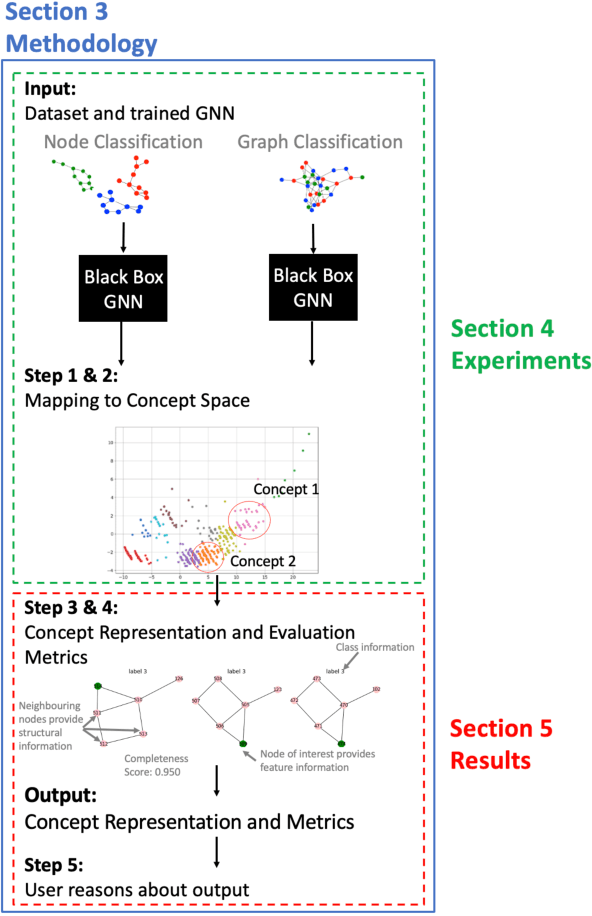



Abstract:While graph neural networks (GNNs) have been shown to perform well on graph-based data from a variety of fields, they suffer from a lack of transparency and accountability, which hinders trust and consequently the deployment of such models in high-stake and safety-critical scenarios. Even though recent research has investigated methods for explaining GNNs, these methods are limited to single-instance explanations, also known as local explanations. Motivated by the aim of providing global explanations, we adapt the well-known Automated Concept-based Explanation approach (Ghorbani et al., 2019) to GNN node and graph classification, and propose GCExplainer. GCExplainer is an unsupervised approach for post-hoc discovery and extraction of global concept-based explanations for GNNs, which puts the human in the loop. We demonstrate the success of our technique on five node classification datasets and two graph classification datasets, showing that we are able to discover and extract high-quality concept representations by putting the human in the loop. We achieve a maximum completeness score of 1 and an average completeness score of 0.753 across the datasets. Finally, we show that the concept-based explanations provide an improved insight into the datasets and GNN models compared to the state-of-the-art explanations produced by GNNExplainer (Ying et al., 2019).
Algorithmic Concept-based Explainable Reasoning
Jul 15, 2021


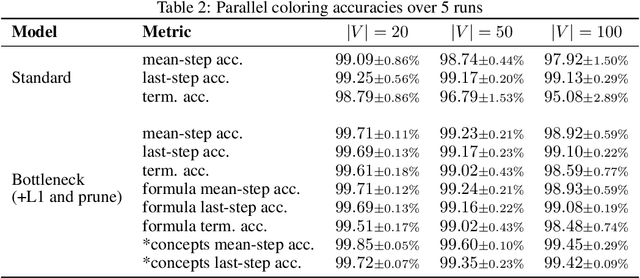
Abstract:Recent research on graph neural network (GNN) models successfully applied GNNs to classical graph algorithms and combinatorial optimisation problems. This has numerous benefits, such as allowing applications of algorithms when preconditions are not satisfied, or reusing learned models when sufficient training data is not available or can't be generated. Unfortunately, a key hindrance of these approaches is their lack of explainability, since GNNs are black-box models that cannot be interpreted directly. In this work, we address this limitation by applying existing work on concept-based explanations to GNN models. We introduce concept-bottleneck GNNs, which rely on a modification to the GNN readout mechanism. Using three case studies we demonstrate that: (i) our proposed model is capable of accurately learning concepts and extracting propositional formulas based on the learned concepts for each target class; (ii) our concept-based GNN models achieve comparative performance with state-of-the-art models; (iii) we can derive global graph concepts, without explicitly providing any supervision on graph-level concepts.
Failing Conceptually: Concept-Based Explanations of Dataset Shift
May 01, 2021



Abstract:Despite their remarkable performance on a wide range of visual tasks, machine learning technologies often succumb to data distribution shifts. Consequently, a range of recent work explores techniques for detecting these shifts. Unfortunately, current techniques offer no explanations about what triggers the detection of shifts, thus limiting their utility to provide actionable insights. In this work, we present Concept Bottleneck Shift Detection (CBSD): a novel explainable shift detection method. CBSD provides explanations by identifying and ranking the degree to which high-level human-understandable concepts are affected by shifts. Using two case studies (dSprites and 3dshapes), we demonstrate how CBSD can accurately detect underlying concepts that are affected by shifts and achieve higher detection accuracy compared to state-of-the-art shift detection methods.
Manipulating SGD with Data Ordering Attacks
Apr 19, 2021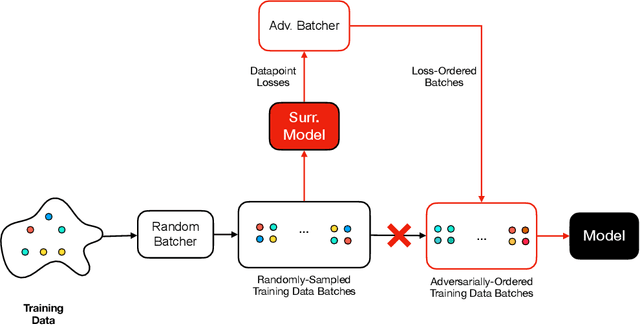
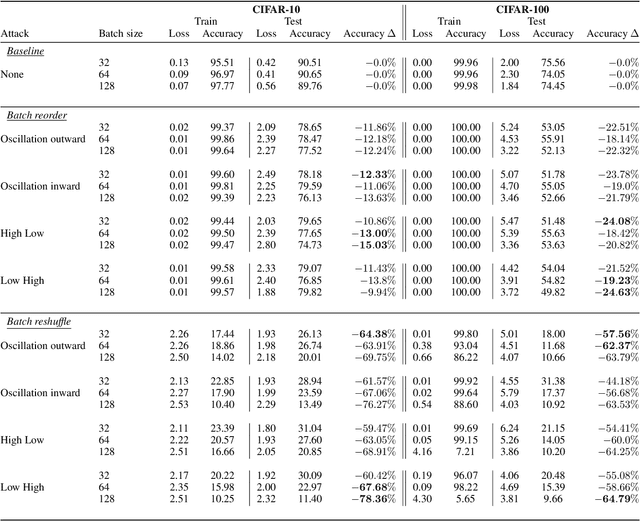

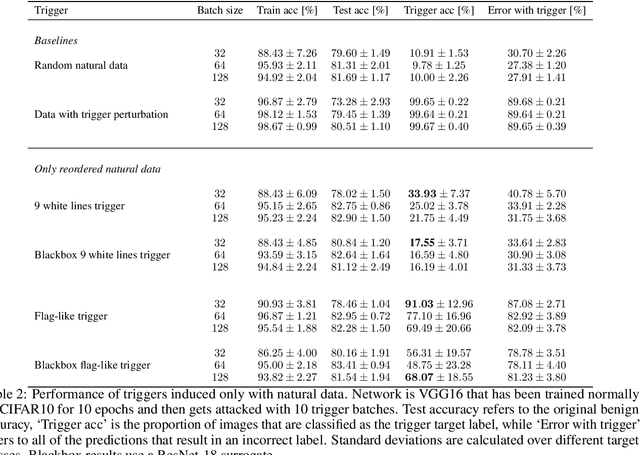
Abstract:Machine learning is vulnerable to a wide variety of different attacks. It is now well understood that by changing the underlying data distribution, an adversary can poison the model trained with it or introduce backdoors. In this paper we present a novel class of training-time attacks that require no changes to the underlying model dataset or architecture, but instead only change the order in which data are supplied to the model. In particular, an attacker can disrupt the integrity and availability of a model by simply reordering training batches, with no knowledge about either the model or the dataset. Indeed, the attacks presented here are not specific to the model or dataset, but rather target the stochastic nature of modern learning procedures. We extensively evaluate our attacks to find that the adversary can disrupt model training and even introduce backdoors. For integrity we find that the attacker can either stop the model from learning, or poison it to learn behaviours specified by the attacker. For availability we find that a single adversarially-ordered epoch can be enough to slow down model learning, or even to reset all of the learning progress. Such attacks have a long-term impact in that they decrease model performance hundreds of epochs after the attack took place. Reordering is a very powerful adversarial paradigm in that it removes the assumption that an adversary must inject adversarial data points or perturbations to perform training-time attacks. It reminds us that stochastic gradient descent relies on the assumption that data are sampled at random. If this randomness is compromised, then all bets are off.
Is Disentanglement all you need? Comparing Concept-based & Disentanglement Approaches
Apr 14, 2021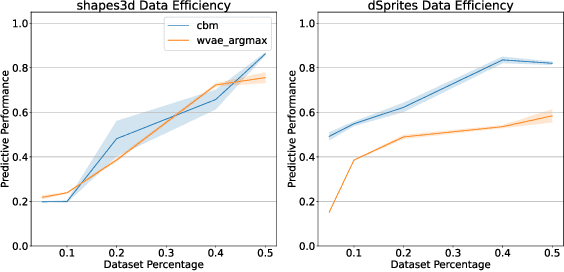
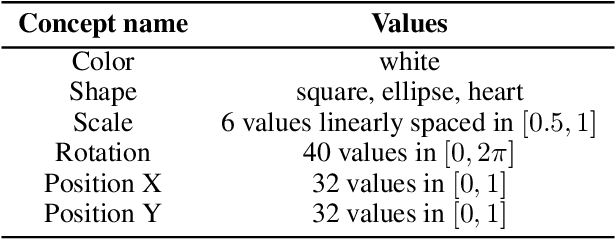

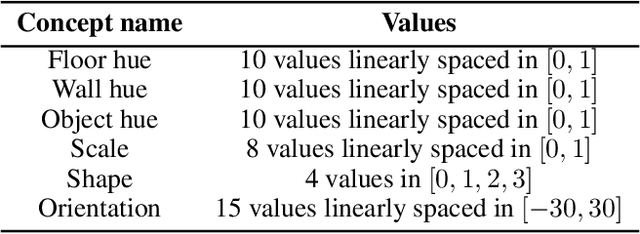
Abstract:Concept-based explanations have emerged as a popular way of extracting human-interpretable representations from deep discriminative models. At the same time, the disentanglement learning literature has focused on extracting similar representations in an unsupervised or weakly-supervised way, using deep generative models. Despite the overlapping goals and potential synergies, to our knowledge, there has not yet been a systematic comparison of the limitations and trade-offs between concept-based explanations and disentanglement approaches. In this paper, we give an overview of these fields, comparing and contrasting their properties and behaviours on a diverse set of tasks, and highlighting their potential strengths and limitations. In particular, we demonstrate that state-of-the-art approaches from both classes can be data inefficient, sensitive to the specific nature of the classification/regression task, or sensitive to the employed concept representation.
MEME: Generating RNN Model Explanations via Model Extraction
Dec 13, 2020



Abstract:Recurrent Neural Networks (RNNs) have achieved remarkable performance on a range of tasks. A key step to further empowering RNN-based approaches is improving their explainability and interpretability. In this work we present MEME: a model extraction approach capable of approximating RNNs with interpretable models represented by human-understandable concepts and their interactions. We demonstrate how MEME can be applied to two multivariate, continuous data case studies: Room Occupation Prediction, and In-Hospital Mortality Prediction. Using these case-studies, we show how our extracted models can be used to interpret RNNs both locally and globally, by approximating RNN decision-making via interpretable concept interactions.
 Add to Chrome
Add to Chrome Add to Firefox
Add to Firefox Add to Edge
Add to Edge